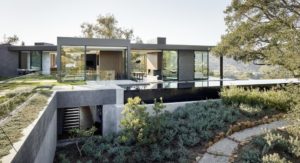Post Contents
Tecoman, Mexico – CDM Casas de México
Built Area: 769.0 m2
Year Built: 2017
Photographs: Rory Gardiner, Lorena Darquea
Found in a small state on the west coast of Mexico, TM House is home to a small family of four. They wanted a relaxing home – something that would make them feel like they’re on a never-ending vacation. With careful consideration of the site, the architects were able to give the family what they wanted – and more.
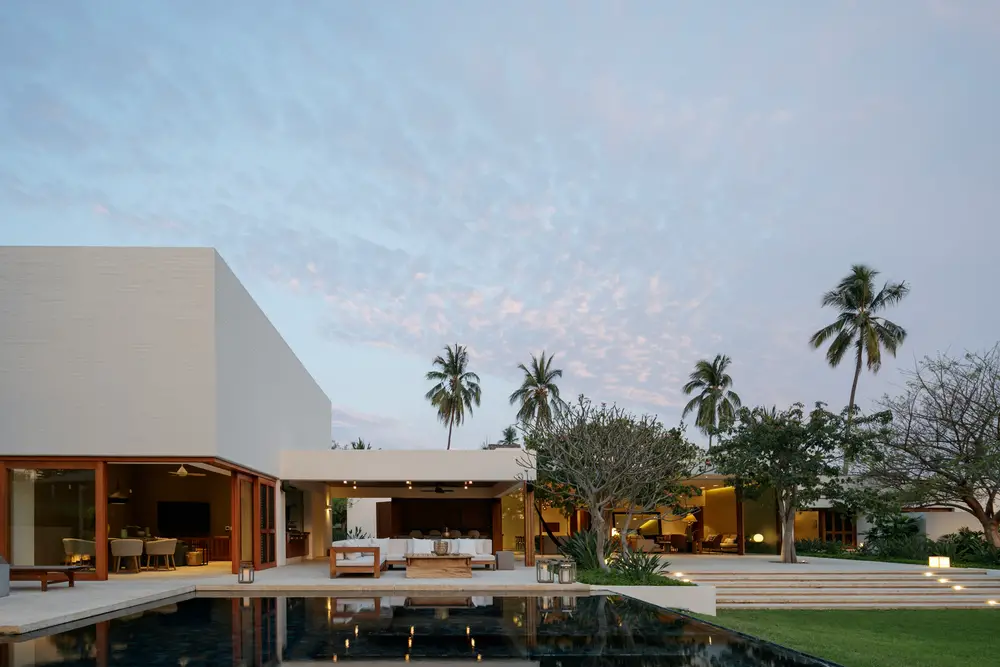
The house is circular in shape. It features a limestone lattice that forms an arc around a gorgeous garden. Because of its tropical climate, TM House was designed as fragmented blocks with open spaces in between. This allows for proper air circulation which is essential in Mexico’s hot and humid climate. Additionally, the house stands on an elevated three-foot platform, raised from the ground to prevent flooding.
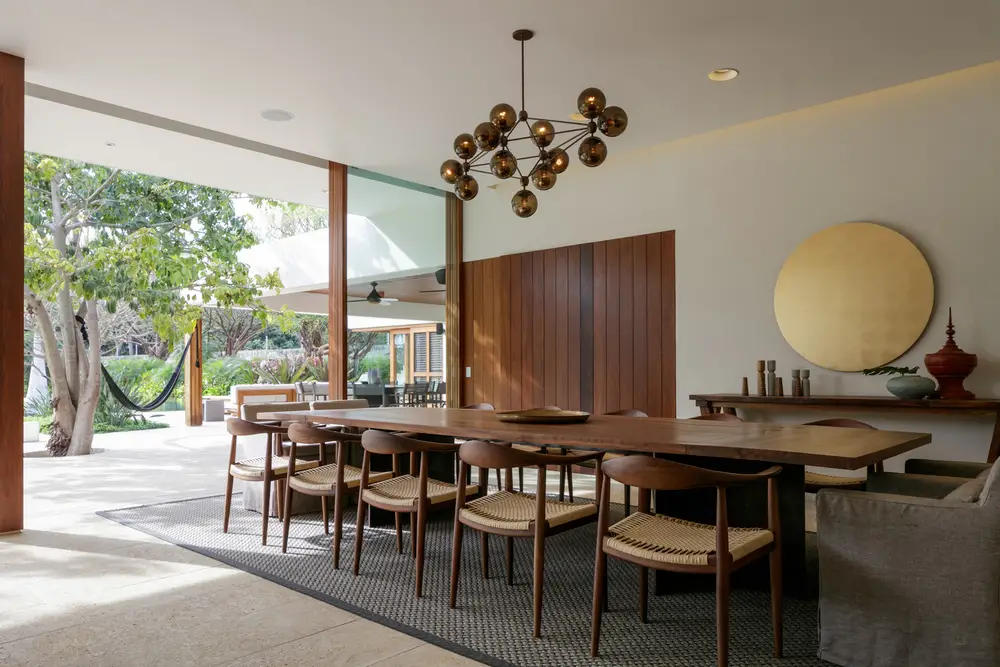
The façade is covered in white stucco, an ode to minimalist design. This pared-back theme continues on to the inside of the house. The interiors feature a restrained material palette of white stucco and timber, bowing to the beauty of the surrounding landscape.
Notes from the Architect:
TM House is located in the state of Colima, Mexico, within a lot of regular topography and geometry, and a surface of 11,670 sq. m. The project consists of a 769 sq. m. single story residence for a family of 4 members. The premise of the project was to integrate the diverse phenomenologies inspired on the tropical paradise of the Mexican pacific, in order to create a residence that constantly refers to unending vacation.
Three key aspects were turning points for the conception of the architecture: climate, topography, and context.
With average temperatures of 25°C, ascending up to 50°C, and with a relative humidity seldom dropping beneath 75%, heat was a major concern.
The land, originally a palm grove, once clean turned out highly profitable in terms of a flat topography with only a few palm trees standing in it. At the same time, an almost inexistent slope made the land susceptible to floods especially during rainy season.
On another hand, the context forces architecture to become introverted and massive as to protect the user from situations of recurring insecurity.
These three elements set the guidelines for the purpose of the project’s architecture.
One very specific type of architecture was chosen that rescues an important aspect of Mexican constructive tradition: the ambivalence between interiors and exteriors. The limits of spaces are blurred to favor the creation of open environments that allow natural air fluxes throughout the entire home.
Thus, the scheme emerges from a program open to the exterior and segmented in blocks that permit such wind passages. A circular patio becomes the flashpoint of ventilations redirecting the airflow from spaces integrated with the terrace towards the sleeping areas. Each block contains a specific use that may be clustered with others or separated always keeping a relation with the exterior.
A 3 ft. platform raises the main floor level from the ground protecting the house against recurring floods. This difference of level between the interior and exterior was used to create sloped gardens that work as thermal buffer zones.
The composite roof consisted of concrete sloped slabs lightened by polystyrene blocks with a palapa system on top that reduces the absorption of solar radiation and contributes to thermal insulation.
Aesthetically, local workmanship contributed to define the character of the home in elements such as handcrafted finishes in walls, roofs and lattices. These combined with a contemporary design generate the overall sensation of authenticity and sophistication; a first home intended to be lived as a second one.
Click on any image to start lightbox display. Use your Esc key to close the lightbox. You can also view the images as a slideshow if you prefer.
Exterior Views:


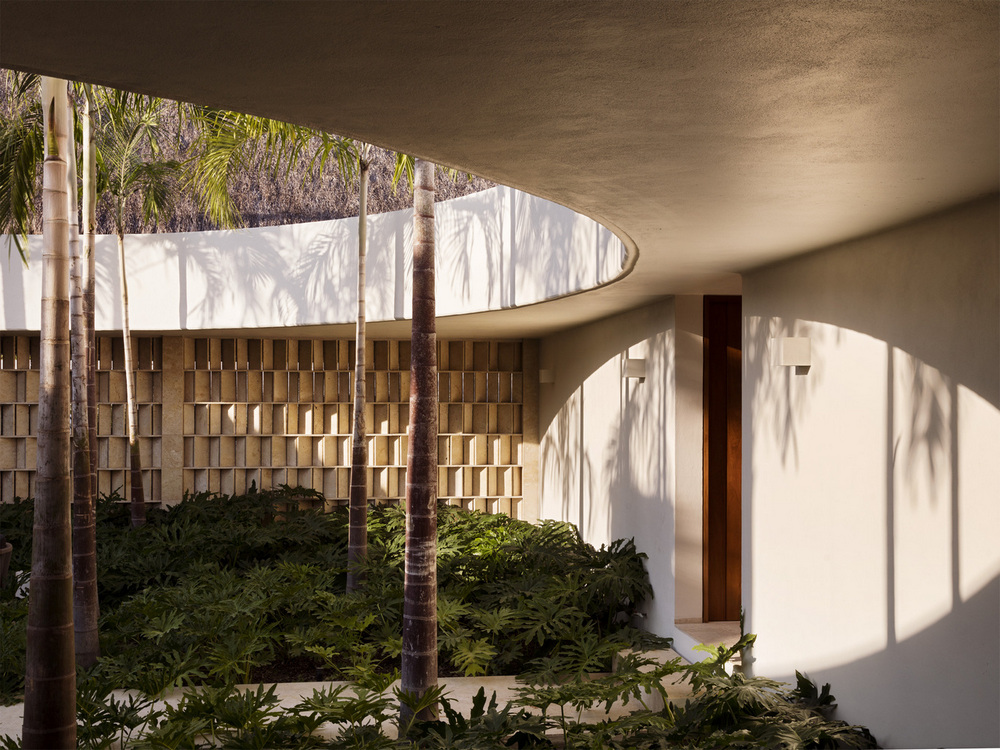

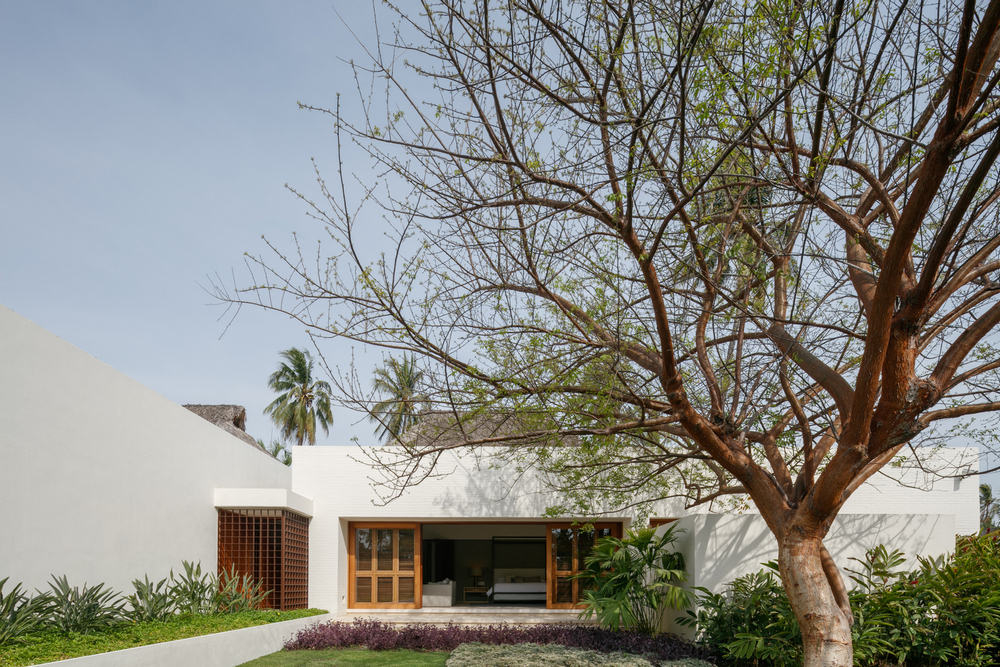

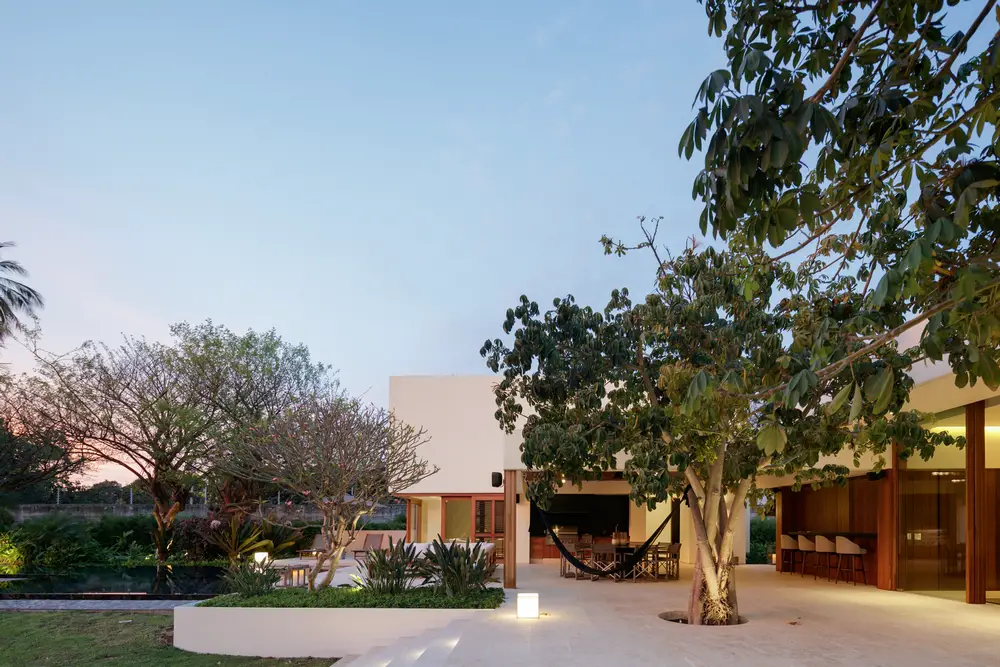

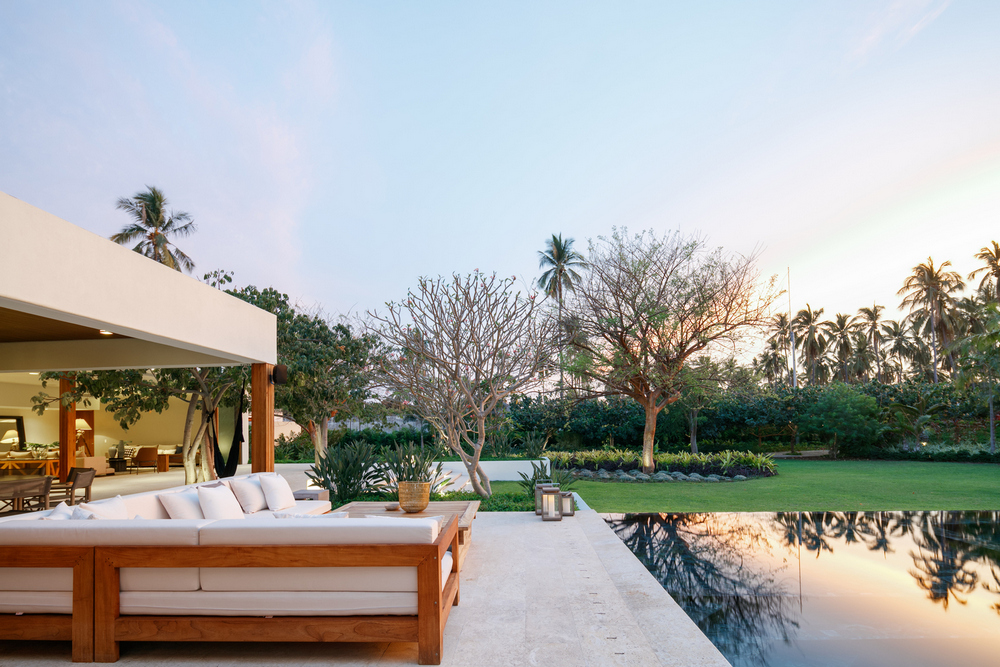



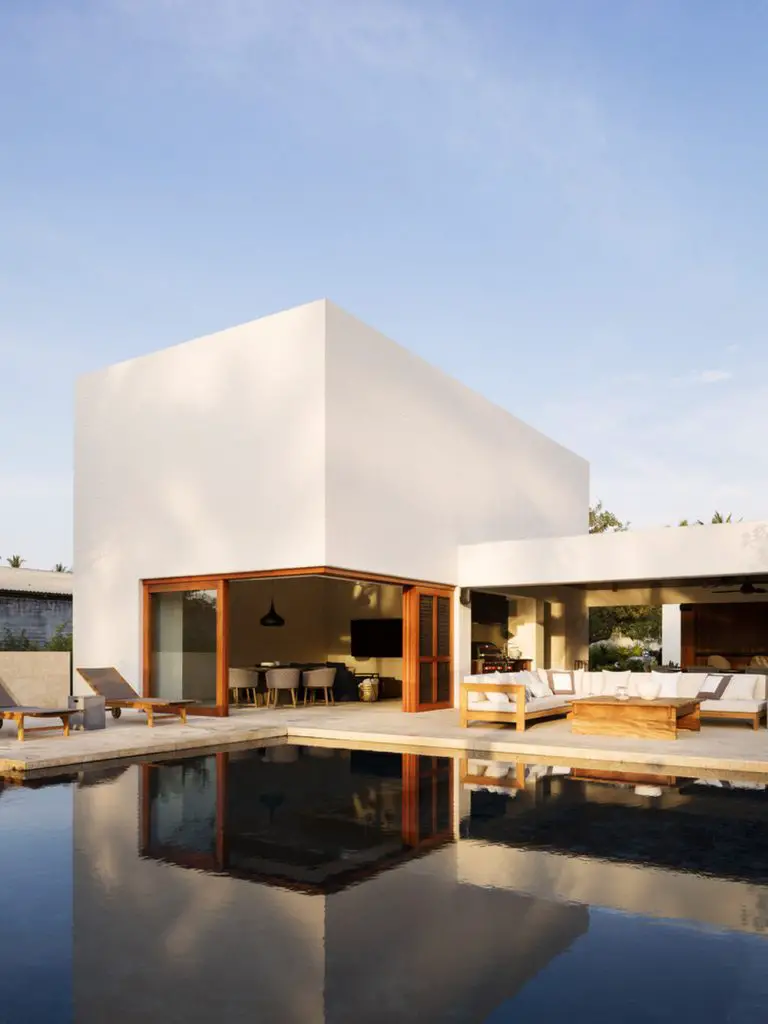

Interior Views:




Drawing Views:
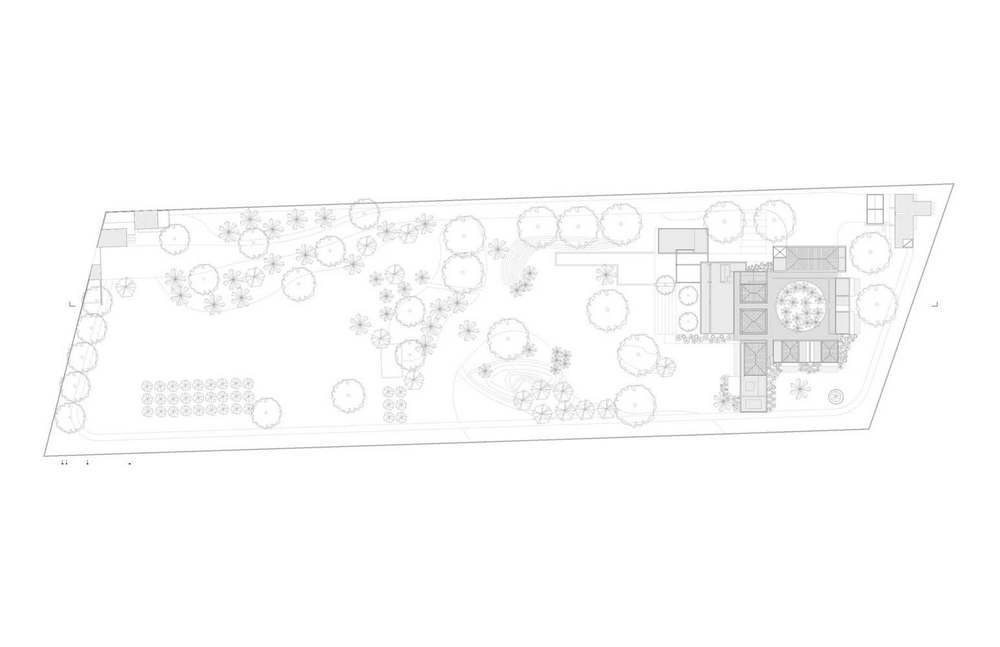



Want more Mexican houses? Oyamel House might interest you…




